
Software testing is a crucial stage in a software development life cycle. It is a process that enables the software testing company to check whether the actual solution matches the expected requirements. It also ensures the deployed software is defect-free. The main goal of the software testing process is to find missing requirements or errors in the developed system.
Software testing is the ultimate solution to deliver a complete solution. To know more about this concept, let us go through this blog.
1. What is Software Testing?
Software testing is an important process to find errors in software systems. It enables the testers to check whether the real outcome of the system matches the expected results or not. It also helps in finding out missing requirements and identifying defects. Testing is the most important step in the software development lifecycle, before deployment. Testing includes the testing phase, analysis, examination, and evaluation of various aspects of the software.
The expert software testers use a combination of test automation tools and manual testing to find out the bugs and errors in the software. Once the test is conducted, the testers report has been sent to the software development team. The main aim of the software testing team is to deliver the product just as the client has requested.
2. Why is Software Testing Important?
Software testing is a crucial phase of the software development life cycle. Before the market launch, it is mandatory to verify that the application functions as intended. There are several compelling factors why software testing is required and important.
2.1 Identifying Problems so the Development Team can Fix Them
Finding flaws and errors is the ultimate objective of software testing. These days, software consists of a web of interdependent parts that must all act together to provide the desired results. It only takes one malfunctioning part to bring down the whole program. The sooner the problematic code is corrected, the less evident it will be.
2.2 Keep and Improve the Quality of the Product
The lack of defects is only one aspect of product quality. Qualities that not only fulfill but also surpass client expectations are what come to mind when talking about quality. While it is assumed that an application will carry out its intended functions, an application can be considered “high-quality” if it surpasses those expectations.
2.3 Make Consumers Feel More Valued and Satisfied
The confidence of consumers is boosted as a result of thorough software testing. While it’s unreasonable to expect flawless software, providing a solid and dependable solution that consistently meets customer demands will result in a favorable user experience over time. By using best practices in software quality management, stakeholders and consumers are assured of a product that has undergone thorough testing.
2.4 Find Security Holes that can Prevent Financial Losses
The Software, whether for financial, medical, legal, or any other similar subject, handles confidential data. Even on a modest scale, software programs developed for these sectors cannot afford to experience crashes, data corruption, or system failures; doing so would impact the lives of countless individuals. These programs are very vulnerable to mistakes that could result in permanent harm and perhaps legal action for the business. The purpose of software testing is to protect businesses against this kind of danger.
3. Types of Software Testing
There are different types of software testing and choosing one of them for your project depends on factors like budget, project requirements, expertise, timeline, and compatibility. This huge domain of testing is divided into two main parts and they are –
3.1 Functional Testing
Functional testing is a popular type of black-box testing and quality assurance (QA) process that creates test cases as per the software component’s specifications. In this type of testing, the software tester checks the functions of the software by providing input and then verifying the output. It can be conducted when the testers want to figure out the compliance of software or components with a particular type of functional requirements.
Functional testing specifies what the software solution does and because it’s a type of black-box testing, it checks the software’s functionality without knowing how the internal programs of the system work. This means that testers don’t have to be aware of the software development programming languages.
In addition to this, functional testing doesn’t mean that the team is testing a method or a function. It means that the functionality of the entire system is being checked or we can say that it is testing program behaviour.
Some of the major types of functional testing are:
3.1.1. Unit Testing
As a first step in functional testing, unit testing involves checking the functionality of independent parts of code. To guarantee that the software’s parts are functioning as intended, developers frequently do this testing during application development. Frameworks like JUnit and TestNG allow developers to automate unit testing. It is possible to avoid spending a lot of money by doing this testing early on.
3.1.2. Integration Testing
During the second stage of functional testing, which is known as integration testing, the functionality of various units or components is tested. This testing phase helps to ensure that the data flow between modules is functioning properly since it checks for errors. Its purpose is to detect and fix problems that arise during module integration. There are a few different ways to conduct integration testing, including top-down, bottom-up, big bang, and gradual.
3.1.3. System Testing
System testing is the final step in ensuring that a software system meets all criteria after unit and integration testing are completed. Because it checks the interaction between the system’s many modules and components to guarantee that end-to-end functionality operates as intended, it is also known as end-to-end testing.
3.2 Non-Functional Testing
Another type of software testing is non-functional testing. It is a process where software engineers check the non-functional requirements of the system. This type of testing includes checking the way a system operates. It is completely different from functional testing, which checks the software against functional requirements that specify the system’s functions and components.
Some of the major types of non-functional testing are:
3.2.1. Documentation Testing
You can evaluate testing time and test coverage with the support of documentation testing. There is a requirements section, test cases, and a test strategy in software documentation.
3.2.2. Installation Testing
Installation testing focuses on the steps that end users need to take to correctly install and configure the product. The process of testing can involve the installation and uninstallation of updates, partial installations, or complete installations.
3.2.3. Performance Testing
To guarantee that software applications will function properly under their estimated load, performance testing is another example of software testing.
3.2.4. Reliability Testing
The product is guaranteed to be excellent and dependable for its intended function via reliability testing. Reliability Testing refers to running an application to find bugs before releasing the product to the public.
3.2.5. Security Testing
A particular type of software testing is security testing, which verifies that an organization’s systems and apps are secure. Finding any loopholes in the system that might allow unauthorized users to steal sensitive data is the main goal of security testing.
4. Software Testing Methods
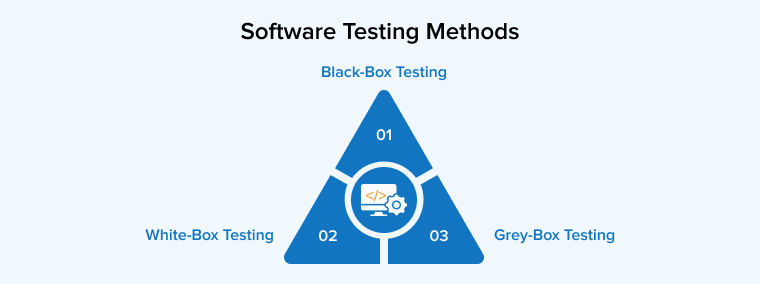
As we know software testing is the most important method of the software development cycle with a wide range of testing methods available. Testers will be familiar with names like unit testing, functional testing, non-functional testing, automation testing, agile testing, acceptance testing, integration testing, regression testing, dynamic testing, stress testing, and other subtypes are all examples of software testing. For each type of application problem, there are several sorts of testing. If you are a tester, you might have heard about some and worked on it, but not everyone is aware of all the many forms of testing.
Each form of testing has its own set of characteristics, benefits, and drawbacks. However, we have covered almost every form of software testing that is utilized by a software testing company. When we think about types of software testing, we only have the ones in mind that are mostly used nowadays. But when it comes to the traditional way of performing tests, there were only three ways of doing it. They are
- Black-box Testing
- White-box Testing
- Grey box Testing
When we thought of software engineering, these were the terms that worked best in testing. But with time and advancement in technology, the methods have changed. Previously, there was no test automation or other ways of testing to ensure quality assurance of developed applications. Consequently, various types of testing took place. Let’s get into details on how each one works.
4.1 Black-Box Testing
Black-box testing refers to the process of testing where the tester does not have any prior knowledge of the internal workings of the application. The tester has no understanding of the system architecture and has no access to the source code. During a black-box test, a tester will often interact with the system’s user interface by providing inputs and examining outputs without understanding how or where the inputs and outputs came from.
Black box testing is a strong testing approach as it tests the system end-to-end. In this type of testing a tester can simulate user activity and see if the system delivers expected outcomes. The design of app development is to satisfy end users and their expectations to obtain an acceptable answer to their requests.
A black box test assesses all essential subsystems along the route, including the user interface/user experience, web server, and application.
4.1.1 Features of Black Box Testing
Software development processes aren’t complete without black-box testing because of the many advantages it provides. Among the most significant features of black box testing are:
- Emphasize External Behavior: By simulating real-world user actions and inputs, black box testing seeks to determine how well a program works from the user’s point of view.
- Independence from Internal Code: Black box testing is beneficial for testers without programming experience as it does not need to understand the internal code or implementation details. By avoiding access to the application’s source code, testers conducting black box testing can concentrate on the app’s external behavior and features effectively.
- Requirements-based testing: To make sure the application satisfies the standards, black box testing is usually focused on the application’s needs.
- Different testing techniques: A wide variety of testing methodologies, including functional testing, usability testing, acceptability testing, and regression testing, can be employed to conduct black box testing.
- Identification of Interface-Level B ugs: For interface-level issues like missing functionality, inaccurate data processing, or misleading error messages, black box testing is important.
- User-Centric Testing: Black box testing guarantees that the program provides a good user experience by concentrating on the end-user perspective.
- Test Case Design Techniques: To make sure all possible scenarios are covered, black box testing uses a variety of test case design approaches such as state transition testing, decision table testing, boundary value analysis, and equivalence partitioning.
- Compatibility Testing: The program’s compatibility with various contexts, browsers, operating systems, and devices can be verified with compatibility testing.
- Test Automation Support: Automated testing is a feature of many black box testing solutions, which speeds up the execution of repetitive test cases and shortens the testing cycle.
4.1.2 Pros of Black-Box Testing
- It is considered one of the most optimal choices for doing functional testing.
- Black box testing facilitates the rapid creation of test scenarios.
- Facilitates the seamless execution of the application.
- Technical expertise is not required for the tester. It is crucial to conduct testing by adopting the perspective of the user and considering things from their viewpoint.
- Testing is possible after the development of the project/application is completed. Both the testers and developers operate autonomously without interfering with each other’s domain.
- It is more efficient for applications that are huge and complicated.
- Defects and inconsistencies can be detected during the initial phases of testing.
- The testing is impartial since the designer and tester do not collaborate.
4.1.3 Cons of Black-Box Testing
- In the absence of technical or programming expertise, there is a risk of overlooking potential conditions that need to be checked in the given scenario.
- Having a larger number of test inputs might be a time-consuming and tiring process.
- There is a high likelihood of obtaining no outcome at the end of a test.
- Due to the time-consuming nature of the task, the entire program might not be thoroughly tested.
- Within a certain timeframe, it is feasible to reduce the amount of testing and exclude the analysis of all potential inputs and their corresponding outputs.
- Attaining comprehensive test coverage is unattainable for extensive and intricate projects.
- Black box testing relies on specifications, which makes it extremely challenging to create test cases without them.
4.1.4 Tools to Perform Black Box Testing
Software testers can automate and manage the testing process with the help of a few various black box testing tools. You can utilize these tools to develop test cases, run them, record the results, and create reports.
Here are a few well-known black box testing tools:
1. Selenium
For online applications, specifically, Selenium finds widespread usage in black box testing. Black box testing on web-based systems can be greatly enhanced with the help of Selenium, an open-source testing framework that automates the testing of web browsers.
Without gaining access to the application’s source code, it analyzes its functioning by interacting with web components on the user interface in a way that simulates actual user interactions.
2. Appium
Many mobile apps UI automation depend on Appium, a black box automated testing tool. This tool is open-source. You can integrate the Appium framework for both mobile and desktop, and it’s easy to tie it into your Selenium-based framework.
3. Cypress
Cypress is available in several versions. Open source and free to use, Cypress Core does require a membership to access premium features like a dashboard. For angular-based app test automation, Cypress is the preferred tool.
4.2 White-Box Testing
The next type of testing is white-box testing which involves thorough analysis and examination of the code from the grassroots level, like core logic and structure. Its other names are Glass testing or open-box testing. When a tester works under this method, they know and have a complete understanding of the internal workings of the code to conduct white-box testing on an application. The tester must examine the source code to determine which unit/chunk of code is acting abnormally.
In white box testing, testers extensively examine the code and other internal components of the program. They determine all the valid and invalid inputs before comparing the outputs to the intended results and the testing criteria. The software tester examines the statements and conditions, as well as the code pathways and data flows, for hidden mistakes or defect-prone components.
Although you can use white-box testing at the unit level, its implications are most commonly seen in integration testing and regression testing. The approach allows testers to inspect pathways inside units for code flaws and other issues that might prevent the product from performing as expected. The performance of the app depends on strong integration with previously tested code, lowering the likelihood of issues later on.
4.2.1 Feature of White Box Testing
Below are some of the most significant features of White Box Testing:
- Analysis of code coverage: White box testing is useful for analyzing an application’s code coverage and finding untested parts of code.
- The ability to access the code: White box testing allows for the testing of specific operations, processes, and modules inside an application by requiring access to its source code.
- Addressing logical errors: Infinite loops and improper conditional statements are examples of logical flaws that white box testing can potentially find.
- Integration testing: Integration testing benefits from white box testing since it enables testers to confirm that the application’s various components are cooperating as intended.
- Performing unit tests: Unit testing, which entails checking the functionality of various components of code, also makes use of white-box testing.
- Code optimization: By revealing performance issues, repeated code, and other areas that could benefit from improvement, white box testing can assist in optimizing code.
- Security testing: To find security flaws in the application’s code, white box testing can be utilized for that purpose as well.
- Design Verification: The implementation of the software’s internal design is checked to make sure it matches the specified design documentation.
- Verify Code accuracy: This check ensures that the code follows all the rules and requirements.
- Dead Code Determination: When the software is operating regularly, it discovers and removes any code that isn’t utilized.
4.2.2 Advantages of White Box Testing
- It ensures that the entire code is tested thoroughly. Thus, it enhances the level of specificity in your tests.
- Reducing data duplication, unnecessary coding lines, and mistakes, improves your code. Therefore, it is a great tool for keeping up with code standards.
- When developing software, it is possible to begin this testing early on. This method of testing comes in two varieties: unit testing and integration testing.
- Selenium, Appium, TestNG, and other test automation technologies make this task easy to automate. Therefore, it’s a method that saves time.
4.2.3 Drawbacks of White Box Testing
- Since you need to know how everything works on the inside, it’s a difficult testing method. Therefore, it adds complexity to a huge system.
- Reusing the test cases is not an option. It is recommended to rewrite the code and modify the test cases regularly.
4.2.4 Tools to Perform White Box Testing
Next, we will have a look at the best white box testing open-source tools:
1. Veracode
Finding and fixing software bugs has never been easier or more cost-effective than using Veracode’s white box testing tools. You can utilize it to check the safety of desktop, online, and mobile apps, and it supports several programming languages.
2. Bugzilla
One well-known tool for keeping track of bugs is Bugzilla. Assigning, managing, confirming, and resolving bugs are all part of their life cycle, and this tool lets you keep track of all these activities. Developers will have all the details they require to fix the issue if they track the actions that lead up to reproducing it.
3. NUnit
When it comes to evaluating test results, the user-friendly and open-source NUnit framework does not need any human involvement. You can use it with any .NET language. It is compatible with NUnit’s parallel testing capabilities and data-driven tests as well.
4.3 Grey-Box Testing
Grey-box testing is a method of testing an application with only a basic understanding of its internal workings. The grey-box method is a process of testing that uses a simple black-box methodology to test complicated systems, allowing almost anybody to complete the tests, from developers to testers to end-users.
However, to build test cases, an engineer must have a working understanding of the software’s internal structure, which includes documentation on data structures, architecture, and functional requirements. In contrast to black-box testing, where the tester only evaluates the application’s user interface, grey-box testing allows the tester to access design papers.
Penetration testing, end-to-end system testing, and integration testing are all typical uses for grey box testing. Interactive Security Testing tools can also be used to do grey box testing. In these IAST tools, we can use the combination of white box testing to assess static code, and tools used for black box testing when combined in IAST tools. These tools will enable developers to test effectively and apply maximum coverage to its aspects.
4.3.1 Features of Grey Box Testing
Here are the main features of gray box testing:
- Comprehending the fundamental technology and architecture of an application.
- Recognizing issues that arise in certain settings.
- Integrating automated and manual testing approaches.
- Acknowledging challenges that are both technical and practical.
4.3.2 Advantages of Grey Box Testing
- Testing is conducted with well-defined objectives for both users and developers.
- The majority of grey box testing is conducted from the user’s point of view.
- For this testing, strong programming abilities are not necessary.
- Gray box testing is non-intrusive.
- With gray box testing, developers get more time to resolve bugs.
- Gray box testing combines the best features of black box and white box testing.
- Testing in a gray box is objective. This helps minimize disagreements between developers and testers are minimized.
- Integration testing benefits greatly from gray box testing.
4.3.3 Drawbacks of Gray Box Testing
- It is challenging to identify errors while checking distributed systems using gray testing.
- When code path navigation is hampered, it’s because the internal structure is not easily accessible.
- It is not possible to conduct thorough gray box testing without access to the source code.
- Algorithm testing is not a good fit for gray box testing.
- It is challenging to design the majority of the test scenarios.
4.3.4 Tools to Perform Grey Box Testing
Let’s take a look at the best Grey Box testing tools:
The vast majority of all online browser traffic originates from Google Chrome. Hence, utilizing the user-friendly features provided by Google for your application is a wise decision. It makes working on browser-based apps possible and is the preferred method for testing web writing and fixing layout errors. Grey Box Testing and debugging tools are available in Google Chrome. It makes the code more compatible with Chrome.
2. JUnit
As an open-source framework, JUnit restricts itself to the Java language while allowing users to conduct repeated tests. Although this limitation isn’t problematic on its own, it could be difficult for less experienced testers due to the complicated API and UI.
3. PostMan
An easy-to-use testing tool for creating and interacting with HTTP APIs, PostMan is available as a Google Chrome extension. One of its standout features is the ability to use the JavaScript library to build collections of requests.
5. Software Testing Life Cycle
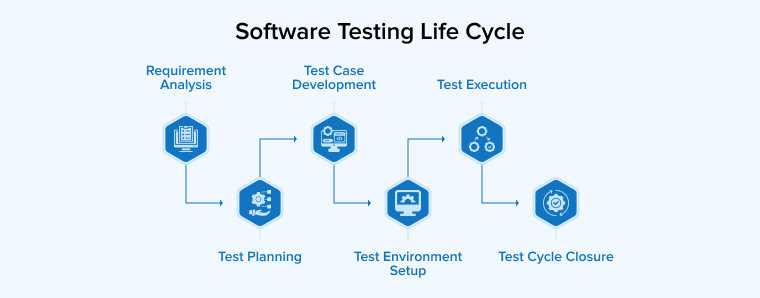
Software testing life cycle (STLC) is a process that comes with various activities that every software testing team must perform to ensure the software’s quality. There is a series of activities that must be conducted to perform software testing. It also specifies the type of test activities to be carried out and when would be the outcome of these test activities.
The STLC process comes with different activities and each activity of this lifecycle must be carried out in a planned manner to get the perfectly secured software. Here are the different software testing life cycle phases –
5.1 Requirement Analysis
The first step is to do a requirement Analysis. The quality assurance team must understand the requirements of the software and figure out what to test & what will be the testing requirements.
5.2 Test Planning
The next step in the software testing life cycle is test planning. Here all the software testing strategies are specified. This step is also popularly known as the Test Strategy phase. Here the test manager gets involved and specifies the testing efforts and cost required for the project.
5.3 Test Case Development
After the test planning phase, the test case development process starts. Here the testing department documents the detailed test cases and also prepares the test data. And once the test cases are ready, they are reviewed by the quality assurance lead.
5.4 Test Environment Setup
The next step is to set up an environment for tests. Here the team makes sure that they have the right testing environment which includes setting up hardware and software for testing.
5.5 Test Execution
After the testing environment is ready, the next thing to do is test execution. In this process, the testers execute the code and compare the generated results with the expected results. The analysis of the results starts from the very beginning of the execution process and the test scripts are created throughout this process.
5.6 Test Cycle Closure
The final stage in the software testing life cycle is to close the test cycle. This process includes calling out the team members of the testing team and evaluating the entire cycle as per the quality cost, test coverage, time, and more.
6. Software Testing Best Practices
There is a standard procedure for testing software. Activities include setting up the test environment, creating test cases, scripting the tests, assessing the results, and filling defect reports.
The testing process can be time-consuming. For small projects, manual testing or ad hoc testing may be adequate. However, tools are routinely employed to automate processes in bigger systems. Teams may use automated testing to try out new situations, evaluate potential differentiators such as migrating components to the cloud, and receive immediate responses on what does and does not work.
Testing should include not only the API but also the UI and the system as a whole. Also, it’s preferable to perform as many automated tests as possible, preferably at an early stage. The majority of companies utilize commercially available test automation tools, although some create their own. Vendor solutions, on the other hand, provide tools that help simplify crucial aspects of test management, such as:
6.1 Continuous Testing
To ensure the quality of the project, the team tests each new version as it is released. This approach of testing software focuses on automated tests that run parallel to the release procedure. It allows for early software validation in more realistic test settings, which enhances design and decreases risks.
6.2 Configuration Management
Test resources and software updates are often centrally managed. Assets including source code, specifications, design documentation, models, test scripts, and test results are made available to teams. With the support of user authentication and audit trails, teams can easily satisfy compliance standards with little to no extra administrative work.
6.3 Service Virtualization
There may be a lack of test environments at the beginning of a project’s development. Through the use of service virtualization, teams may decrease dependencies and start testing earlier by simulating absent or unfinished services and systems. To test several scenarios without disrupting the live system, they may simply reuse, launch, and modify settings.
6.4 Defect or Bug Tracking
The ability of the testing and development teams to measure and improve quality is directly tied to their ability to monitor problems. By using automated technologies, teams may monitor faults, assess their severity, and find underlying problems.
6.5 Metrics and Reporting
Through the use of analytics and reports, teams can communicate their progress toward goals and the outcomes of any tests conducted. To display project measurements and results in a unified dashboard, modern software packages combine these data sources. Teams can view the whole picture instantly and keep tabs on how testing, development, and other parts of the project are interacting with one another.
7. Summary
As seen in this blog, software testing is important as it helps in finding the missing requirements and bugs within the software. Besides, using software testing basics helps in improving product quality, saving a lot of money, security, and customer satisfaction. The testing process is mainly classified into two main categories – functional testing and non-functional testing. In addition to this, there are different approaches to testing like system testing, unit testing, dynamic testing, exploratory testing, grey box testing, white-box testing, regression testing, and more. So, if the right type of testing is used for the project and the perfect software testing life cycle process is followed, any software development company can get the perfect outcome.


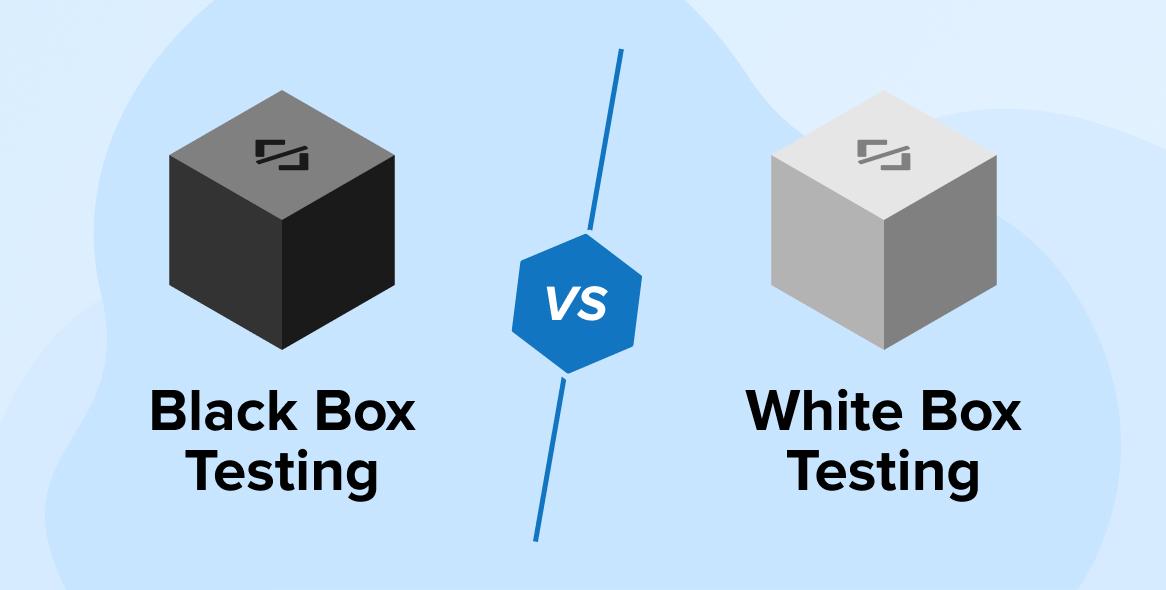
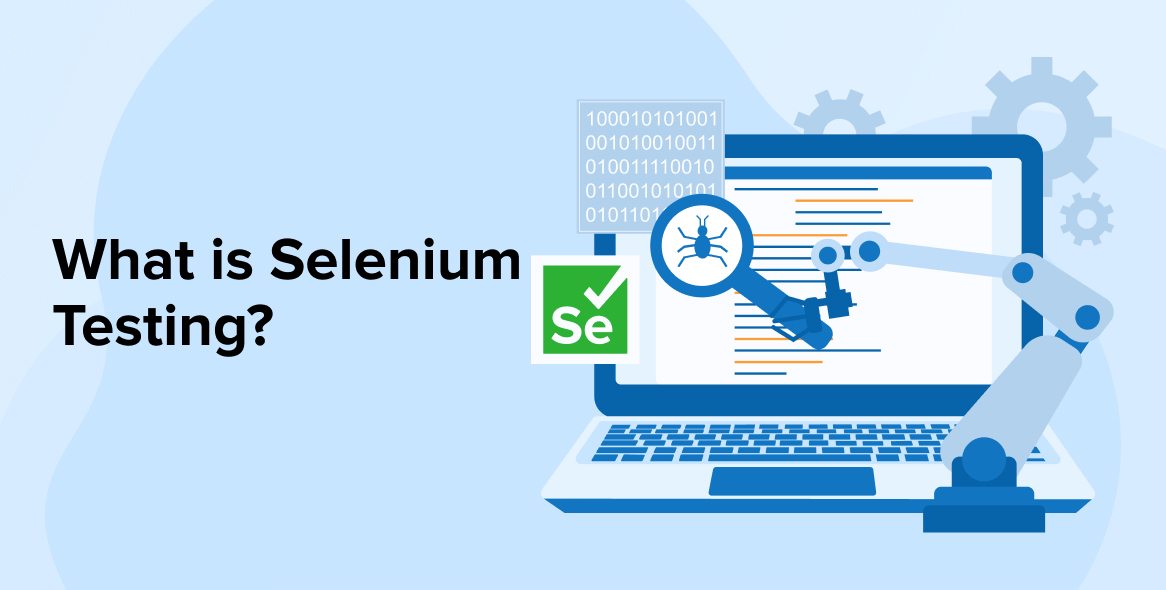
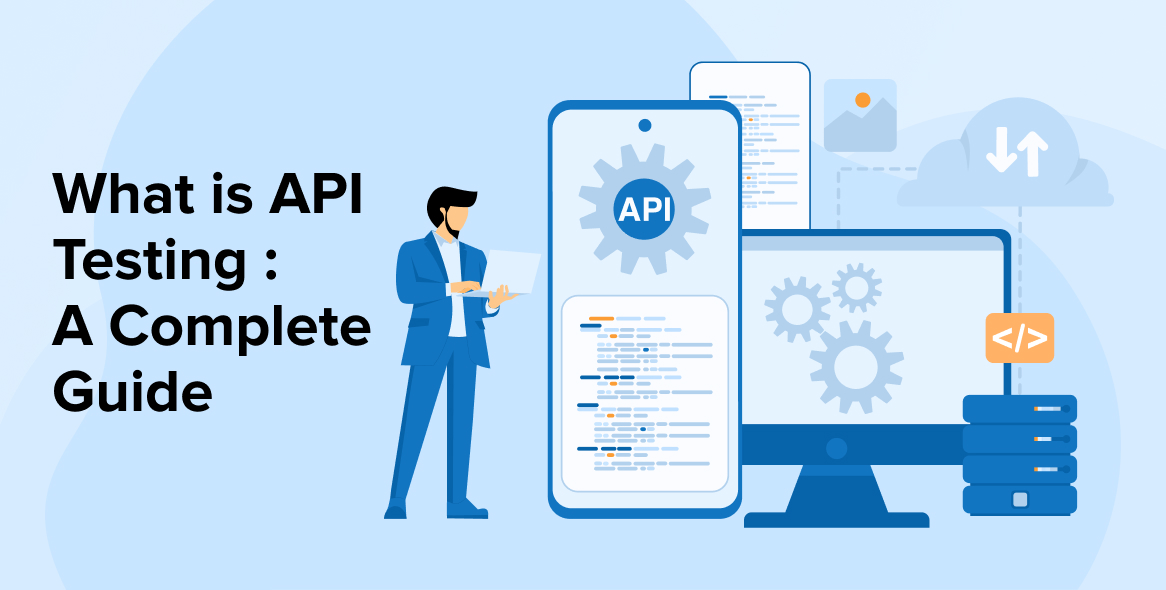

Comments
Leave a message...